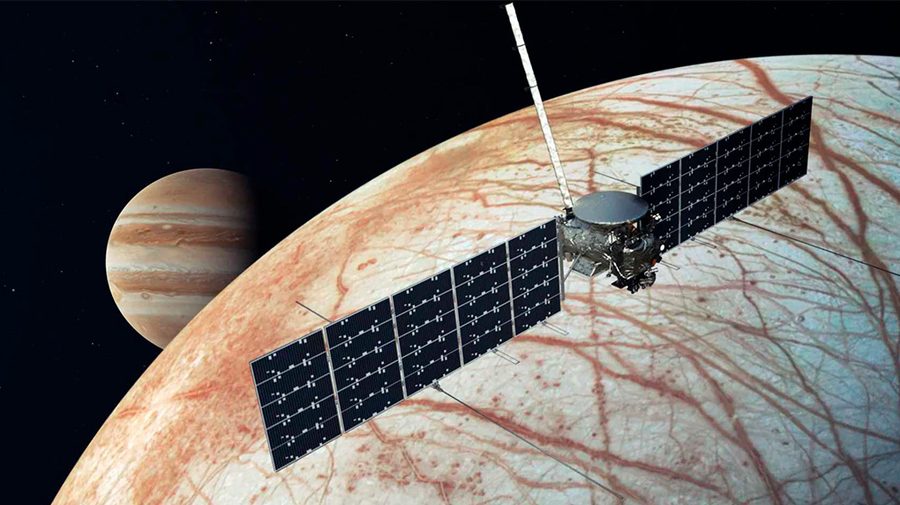Saturn’s moon, Enceladus, is our closest great hope for life beyond Earth
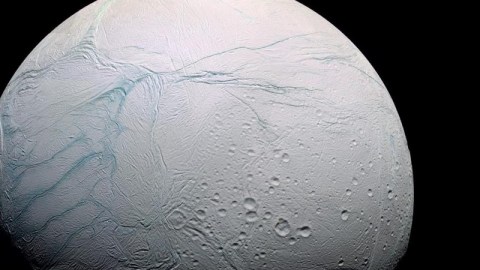
With liquid water, an energy source, and the perfect raw ingredients, Enceladus might be the holy grail we’ve been seeking.
This article is written by contributing author Jesse Shanahan. Jesse is an astrophysicist and science communicator, specializing in public speaking, outreach, and accessibility in STEM.
“Aha! That satellite was scuttled on Enceladus, Saturn’s main dump moon!”
–Professor Farnsworth, Futurama
A mere 790 million miles from Earth, nestled in the diffuse outer rings of the planet Saturn orbits a small, unobtrusive moon. With a diameter about as wide as North Dakota and a maximum surface temperature of approximately -200 degrees Fahrenheit, it seems unlikely that this pale, frigid rock would be of any significance. If you were flying past Saturn in a spaceship, you’d probably write it off as just another rocky moon. Given it’s one of 62 moons orbiting Saturn, it’d be pretty easy to ignore, as it has none of the obvious appeal of other Solar System moons. It has neither a thick atmosphere like Titan nor massive volcanoes like Io; however, it just might be one of the most habitable places in our Solar System. Its blanched, lifeless surface belies a complex, possibly life sustaining ocean just 11–14 miles beneath the icy crust. A series of pale blue stripes across its surface indicate the presence of deep fissures, which spew water ices into space. These jets are responsible for creating the entire E-ring of Saturn, and extend upwards for hundred of miles with every eruption.
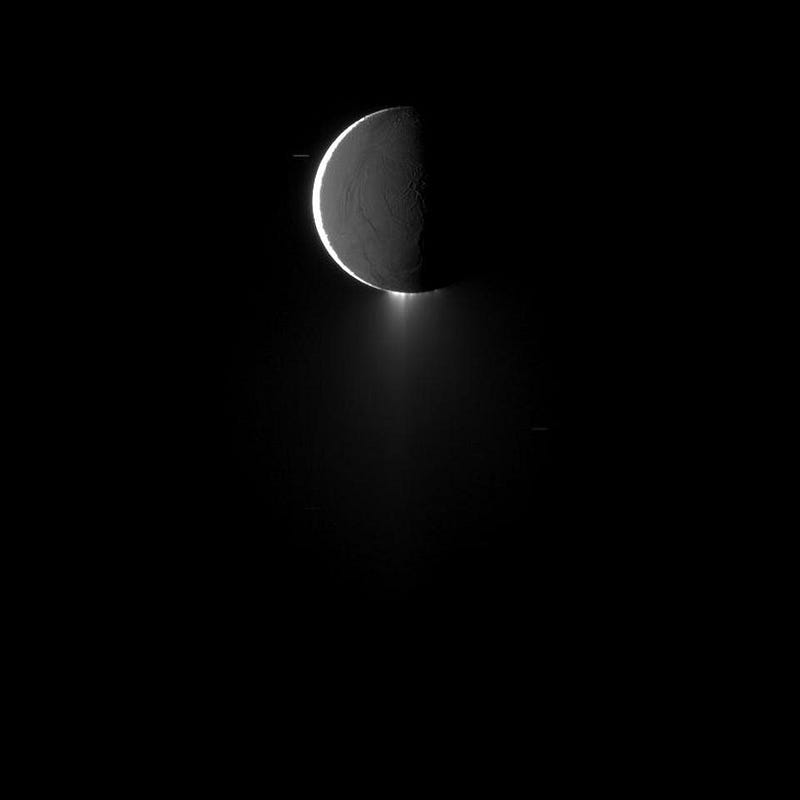
Enceladus was first discovered in 1789 by the British astronomer, William Herschel, who was more famous for his discovery of the planet Uranus. Ironically named after a Giant in Greek mythology, Enceladus remained an elusive speck for almost 200 years after its discovery. Its small size and the surrounding glare from Saturn’s rings prevented it from appearing as anything more than a single pixel on a photographic image. It wasn’t until the Voyager 1 and 2 spacecrafts captured closer images of Enceladus that some peculiarities were noticed.
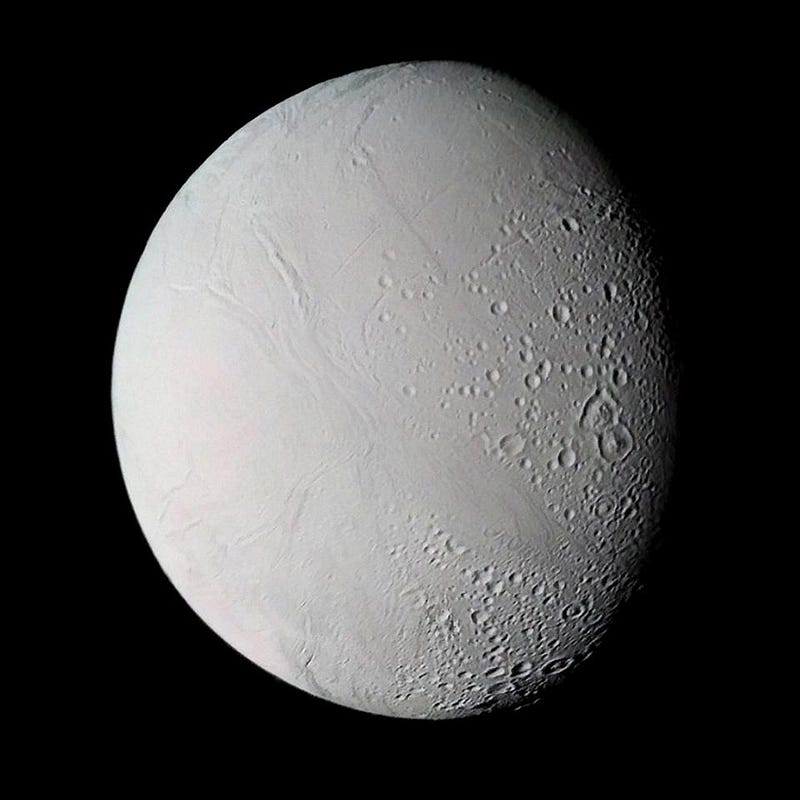
Most significantly, the Voyager scientists noticed that Enceladus has a surface of smooth, bright ice. Quantitative observations have confirmed that in unprecedented fashion: Enceladus is the most reflective object in the entire Solar System. The reason its polished surface is scientifically compelling is that it indicates the presence of active resurfacing, like when a zamboni smoothes the ice after a hockey game. Enceladus’ sleek surface tells scientists that there was significant tectonic or volcanic activity (our ‘space zamboni’) in Enceladus’ geological history. Without this resurfacing, we’d expect Enceladus to look more like Earth’s moon: pockmarked and replete with craters from collisions with asteroids. But not only is it extraordinarily crater-free, the regions where cracks are deepest and most active are also the smoothest.
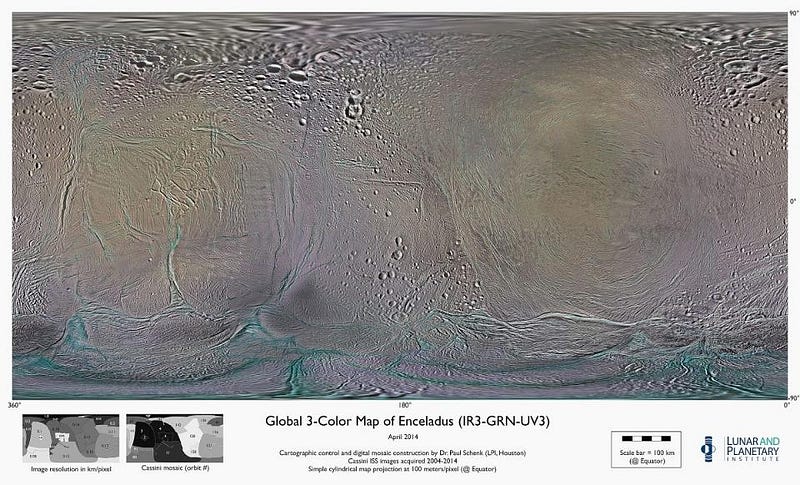
The high reflectivity, smooth surface, and active, watery jets also helped Voyager scientists predict that Saturn’s E-ring was formed from particles spewed from Enceladus’ surface. Sadly, Enceladus fell back into relative obscurity until the Cassini mission reached Saturn in 2004. While the landing of the Huygens probe on Titan dominated planetary scientists’ research efforts initially, several close flybys of Enceladus in 2005, 2008, and 2009 brought this icy moon, and the ring it generates, back into prominence.
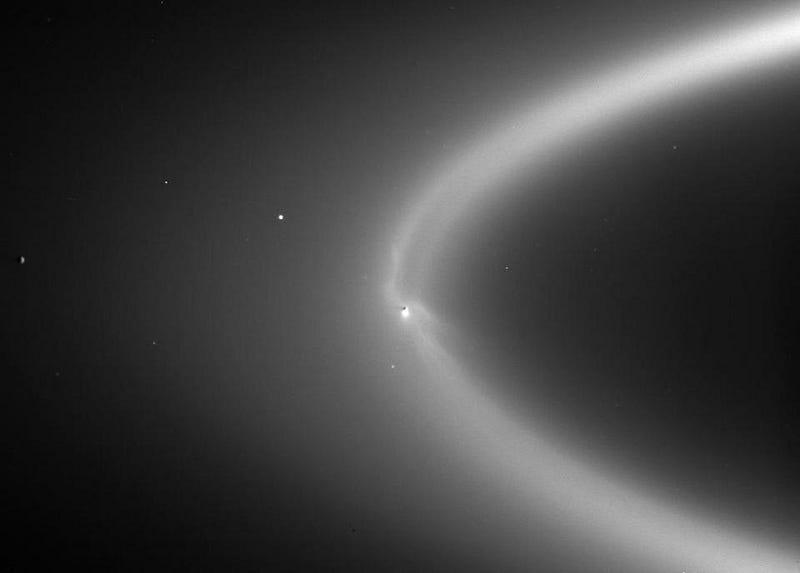
Cassini provided scientists with a wealth of data about Enceladus’ surface and the composition of its powerful plumes. This data showed evidence of a deep saltwater ocean with an energy source beneath Enceladus’ surface. The presence of water, warmth, and organic molecules are the necessary requirements for sustaining life as we know it. Water is proven to exist, while the tidal forces from Saturn provide the necessary heat. Based on observations of other bodies in the Solar System, Enceladus likely contains the raw ingredients for life as well. The suspected existence of all three hints at the possible presence of the precursors to amino acids in this vast subsurface ocean. Should we find extraterrestrial life on Enceladus — or in the geyser-like plumes erupting into space — the implications are almost incomprehensible.
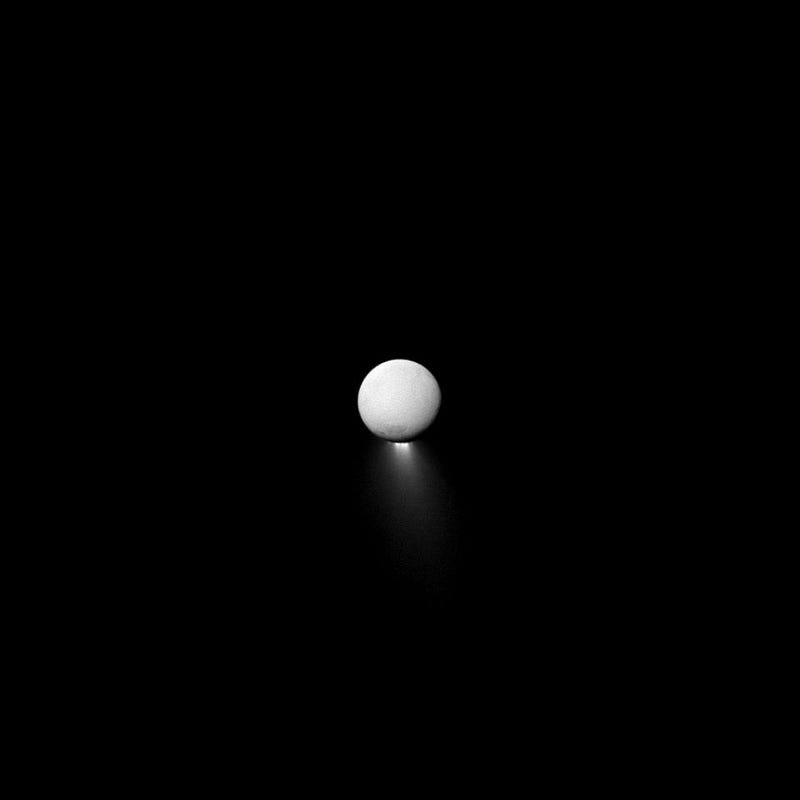
Not only does the existence of this moon give hope for life elsewhere in our galaxy, but it also could radically redefine our understanding of biological life. Our current definition of life is based solely on observations of the diverse organisms on Earth. The discovery of extremophiles — organisms that can live in harsh environments previously thought inhospitable — meant our original definition of the requirements of life was too strict. Life around deep-sea hydrothermal vents, in sulphurous hot springs, and in the hypersaline, alkaline, and arsenic-rich waters of Mono Lake are all breathtaking examples. They also gave scientists renewed hope in discovering extraterrestrial life in incredibly harsh locations in space.
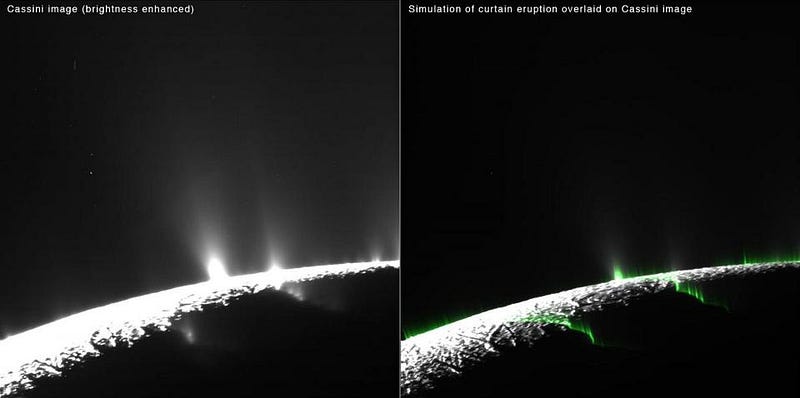
Currently, the simplest definition of life is based on 7 requirements. Life:
- Is composed of cells,
- Responds to stimuli,
- Reproduces,
- Has a metabolism and respires,
- Passes traits on to offspring,
- Grows and changes,
- Maintains homeostasis.
It’s easy to imagine that extraterrestrial life could violate one or more of these requirements, as robustly defining life is still an ongoing area of research in science. Many creative minds in science fiction have pushed back on this definition of life, exploring the possibilities of silicon based life forms (X-Files), electronic/nanotechnological/artificial intelligence (Star Trek), non-metabolic DNA-modifying organisms (Speaker for the Dead), and many, many others. The basic truth is that we cannot truly know what defines extraterrestrial life until that first discovery is made.
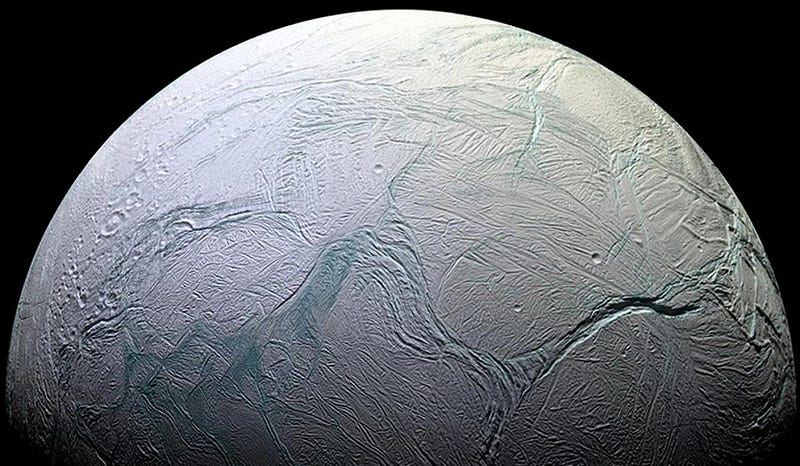
Even if Enceladus doesn’t hold extraterrestrial life, studying its environment could yield clues about the development of life on Earth and hints that our understanding of the requirements for life is incomplete. Many scientists theorize that life first began near hydrothermal vents deep in Earth’s ocean, though there are contrarian points of view. If Enceladus lacks any biological life, it may serve as evidence that continents or continental shelves are indispensable in supporting life. Additionally, life may require more than merely water, energy, and certain organic molecules. Still, even the presence of the most basic unicellular organisms on Enceladus would be the most momentous discovery of our time.
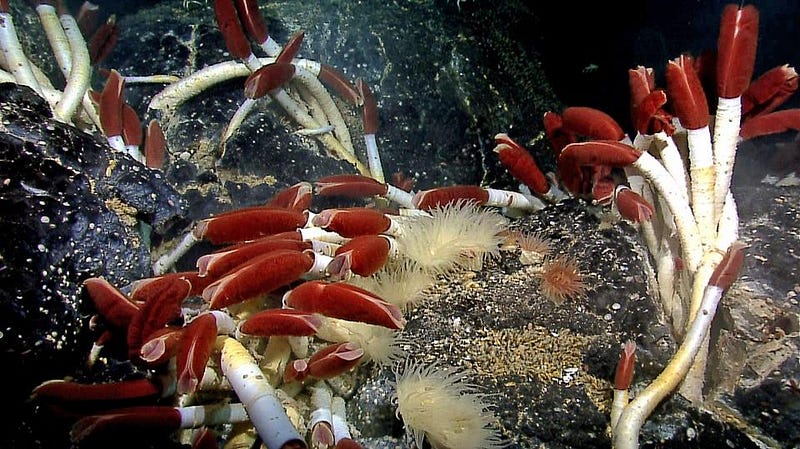
Unfortunately, the Cassini mission is slated to end with the spacecraft’s descent into Saturn’s atmosphere later this year. Although numerous missions have been proposed to follow up on Cassini’s observations, there are no current missions planned to return to Enceladus. Neither a lander nor an orbiter — not even one that would sample the ejected, aqueous plumes — has been greenlit by NASA or any other space agency. It’s heartbreaking for those who study Enceladus, as the secrets it holds must remain hidden for the foreseeable future.
Ethan Siegel is the author of Beyond the Galaxy and Treknology. You can pre-order his third book, currently in development: the Encyclopaedia Cosmologica.


